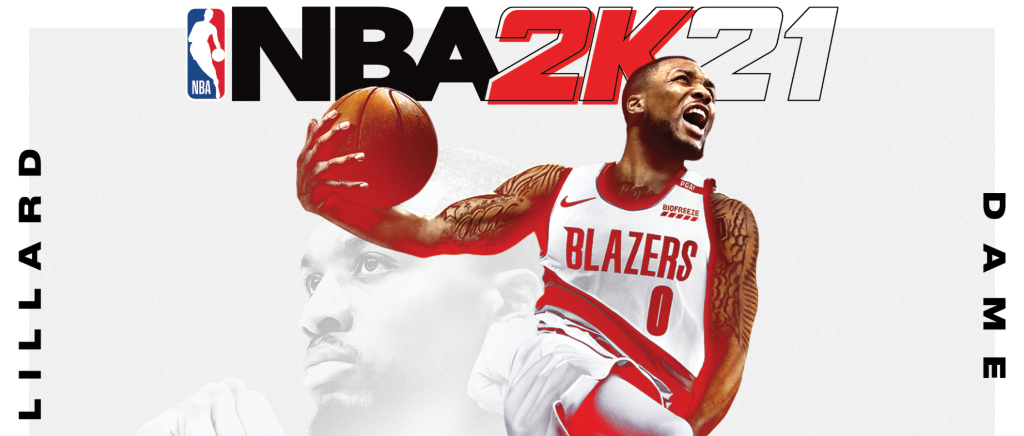
We’re now inside a month away from the launch of NBA 2K21, which for the first time in its history will be launching in the midst of an NBA playoff run rather than in the lead up to a new season. Last week, 2K offered a first look at a gameplay trailer for 2K21 and on Thursday we got our first detailed explanation of gameplay changes that gamers can look forward to in the current-gen game — details on the next-gen version for the PS5 and Xbox Series X figure to come out closer to the launch of those systems. .
The biggest change and upgrade for this year’s edition is the evolution and expansion of the Pro Stick (right joystick) to give you more full control of both dribble moves and shooting. The goal was to make for more dynamic usage of the stick and also making it so that, rather than pointing the stick in any direction to shoot, you have to hold it down to allow for more advanced dribble moves and stick usage. 2K announced the control changes for the Pro Stick, which are as follows.
Hold RS down = jump shot
Hold RS left or right = escape dribble moves
Hold RS up = signature size-ups
Tap the RS = quick 1-to-1 dribble moves
Tap the RS with Sprint held = quick momentum dribble moves
They’ve added more signature moves after working with Nate Robinson on motion capture as well as bringing more moves from NBA stars into the game. The shot stick also is going to be more dynamic for shooting, with them bringing back something akin to 2K17’s shot stick aiming — which they admit didn’t work as intended — but upgraded and tweaked to be more intuitive and give players more control. NBA 2K gameplay director Mike Wang outlined exactly how the Pro Stick shooting will function, both on full shots and on layups at the rim.
For NBA 2K21, when you shoot with the Pro Stick, the shot meter changes from a timing bar to a targeting system. So instead of trying to stop the shot meter when you reach the perfect release window, you adjust the Pro Stick in real time to hit the ideal center aim point. The target window resizes dynamically based on player ability, shooting range, and how well the shot is contested and can also shift to the left or right based on the shot’s degree of difficulty. If you miss the target too far to the left or right, your shot will miss in that direction. And as I mentioned above with the new slider sets, even the slightest degree might be the difference between a make and an airball on Hall of Fame, while it’s quite a bit more forgiving on the easier difficulties. You also won’t be penalized for using the entire shooting motion to find the sweet spot. In other words, you don’t have to time your release when you’re shooting with the Pro Stick. But if you want to take it to the next level and know your release, you can lock in your timing and aim by either centering the Pro Stick or by tapping one of the triggers when you reach the apex of the shot. The lock in will be indicated by a brief flash on the shot meter. If you can time AND aim well, you will give yourself the best chances at making the shot.
The aiming concept also applies to finishing layups, replicating the idea of having “good touch” around the rim. As you’re driving you can still hold the Pro Stick in any direction to start a layup, but this year, you’ll want to quickly swing the stick to move the aiming tick to the center of the target. Aiming layups well can help overcome shot contests and help you finish through contact. Personally, it has been hard for me to go back to the Shot Button after getting used to Pro Stick shooting. And because shooting with the stick offers a bit more complexity than just holding and releasing a button, it also carries a greater risk/reward. If you can master shooting with the Pro Stick, you’ll have a higher ceiling for getting greens and making tough shots, so I’m pretty sure it’s going to be the shot method of choice for many competitive 2K players. But since I know some will ask… yes, there is an option to disable Shot Aiming if you really want to go back to last year’s controls.
Both the expanded dribble moves and shooting are supposed to provide more control and opportunity for advanced players should they choose to use it, and 2K promises it will be intuitive once you play a few games with it.
The other major update is that point guards in MyPlayer are now allowed to be as tall as 6’8 at the request of cover athlete Damian Lillard, who offered some other feedback they say helped inform gameplay decisions and updates. So, even if you don’t want to do that, you can fully expect to see an awful lot of extra tall point guards in The Park this year.
